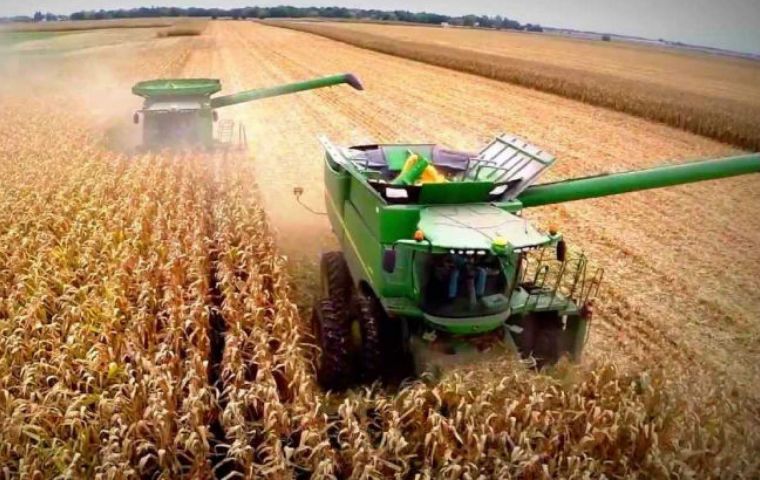MercoPress. South Atlantic News Agency
FAO anticipates a sharp decline in global cereal stocks
 Maize output in the southern hemisphere is expected to decline somewhat in Argentina and Brazil from record highs but remain above average levels
Maize output in the southern hemisphere is expected to decline somewhat in Argentina and Brazil from record highs but remain above average levels FAO's Cereals Supply and Demand Brief point to record wheat and rice production in 2020 and looking ahead to 2021 cereal output, early prospects indicate a likely modest increase for winter wheat crops in the northern hemisphere, buoyed by acreage increases in France, India, the Russian Federation and the US.
Maize output in the southern hemisphere is expected to decline somewhat in Argentina and Brazil from record highs but remain above average levels. The production outlook in South Africa and neighboring countries is favorable.
At the same time, this month's forecasts point to larger volumes of world trade and a sharp decline in global cereal stocks.
Globally, cereal utilization in 2020/21 is now forecast at 2 761 million tons, up 52 million tons from the previous season. Leading the increase is robust use of coarse grains for feed in China. Worldwide utilization of wheat and rice are forecast to rise by 0.7% and 1.8%, respectively, during the year ahead.
Global cereal stocks are forecast to decline by 2.2% to 801 million tons, their lowest level in five years. That would bring the world stocks-to-use ratio of cereals down to 28.3%, a seven-year low. The new figures reflect a massive downward adjustment to maize inventories in China.
World cereal trade in 2020/21 is now forecast at 465.2 million tons, a hefty 5.7% expansion from the previous season's record high. The raised estimates reflect large purchases of maize by China, particularly from the US. International trade in rice is anticipated to expand even more, by 7.9%, reflecting strong growth of exports by India.
China's unexpectedly large purchases of maize in recent weeks point to a much higher demand for feed and lower domestic supplies than earlier anticipated, which is likely linked to the swift recovery in pork production after the African Swine Fever outbreak.




Top Comments
Disclaimer & comment rulesCommenting for this story is now closed.
If you have a Facebook account, become a fan and comment on our Facebook Page!